Patch 2.0 for Cyberpunk 2077, the game’s swansong and final major update, predates the Phantom Liberty DLC by about a week, and while the two aren’t connected inasmuch as you don’t need to purchase Phantom Liberty to enjoy the changes in Patch 2.0, but their proximity makes them fairly contemporaneous and hence it’s easy to conflate the two. That being the case, an overview of all the major gameplay changes made in Patch 2.0 - and by extension, Phantom Liberty - will be made here. Pretty much every major gameplay system in Cyberpunk 2077 has been at least tweaked, and many more have been fundamentally altered, from perks, skills, enemy progression, crafting - you name it. This page will cover all these changes briefly while linking out to more in-depth pages.
(1 of 2) In older versions of the game, different perks had varying attribute requirements.
In older versions of the game, different perks had varying attribute requirements. (left), In patch 2.0, perk trees are organized into four tiers, with attribute requirements of 4, 9, 15 and 20. (right)
Perks and Attributes¶
You complete quests/objective and defeat enemies, you earn EXP. Gain enough EXP and you’ll level up, gaining a perk point and an attribute point to spend. Perks and attributes are still closely tied, as perk trees are still segregated into tiers that require you to reach certain attribute benchmarks to unlock, but this has been vastly simplified. Now there are four tiers, as follows:
| Perk Tier | Attribute Required |
|---|---|
| Rookie | 4 |
| Pro | 9 |
| Phenom | 15 |
| Legend | 20 |
Perk trees are also completely reorganized, with completely new perks and new structure, doing away with the old subtrees and instead opting for a more traditional interconnected weapon of perks, some of which have to be purchased in a specific order to unlock others. Perks and attributes no longer directly influence skills and there are generally fewer perk points to deal with. A more detailed breakdown can be found on the page [Perks in Cyberpunk Patch 2.0].
(1 of 2) Prior to patch 2.0, there was one skill tree per perk subtree, and the maximum rank you could achieve in a skill tree was equal to the related attribute score for that perk.
Prior to patch 2.0, there was one skill tree per perk subtree, and the maximum rank you could achieve in a skill tree was equal to the related attribute score for that perk. (left), As of 2.0, however, skill trees are reduced in number and complexity. (right)
Skill Trees¶
In the pre-patch 2.0 version of Cyberpunk 2077, skills were intrinsically bound to both attributes and perk trees. Attributes could range from 3 to 20, and each attribute had an associated perk tree, (eg. Body), which had two or three subtrees within it (Body had Athletics, Annihilation and Street Brawler). These subtrees consisted of clusters of related perks that could be purchased with perk points, but each subtree had an associated skill tree that typically governed some weapon type of core aspect of combat - Blades, Handguns, Quickhacks, etc. Each of the game’s twelve skill trees had twenty ranks each, and each rank - which you’d usually increase through defeating enemies with weapons or attacks pertaining to each skill tree - would yield passive bonuses. The max rank you could attain in each skill tree was determined by that tree’s governing attribute - if you had ten Body, you could only reach rank 10 in Athletics, Annihilation, and Street Brawler, for example.
That’s all out the window as of patch 2.0. These original twelve trees have been trimmed down to a mere five and many of their functions combined, sometimes in odd ways. Generally you’d perform a very clear action relating to a subtree to gain skill EXP - killing enemies with pistols would grant skill EXP for the Handguns skill, for example. Now that these skills have been combined into various “roles”, the distinction is less clear-cut. Kill an enemy with a pistol or revolver and you’ll gain Headhunter skill EXP. Use a tech pistol’s alternate fire mode, however, and you’ll gain Engineer skill EXP. Making a kill while using a smart pistol’s smart targeting mode will earn you Netrunner EXP. Pistol whipping an enemy will earn you Solo skill EXP. In other words, how you use a weapon can matter just as much as the weapon itself, although it’s also possible to earn multiple different types of skill EXP at a time, depending on how you approach a fight. These five skills now can each reach rank 60, but only every fifth rank (5, 10, 15, etc.) actually gives you any benefit, so there are fewer skill trees, fewer rewards per tree, and there are more ways to earn EXP for each tree.
A more detailed rundown of how skill trees work in patch 2.0 - and how to level each skill - can be found on the page Skill Progression in Cyberpunk Patch 2.0.
(1 of 2) In older versions of the game, throwing a grenade or using healing would consume resources,
In older versions of the game, throwing a grenade or using healing would consume resources, (left), but in patch 2.0, these are both on cooldowns - once you craft a type of grenade or healing inhalers you can use it any time it’s not on cooldown. (right)
Grenades and Healing¶
Grenades and healing items generally used to be standard consumables that you’d equip and deplete, buying, finding or crafting more, as necessary, cluttering your inventory in the process and making you think about your resources before taking a huff of sweet, sweet restoration or tossing some deadly or debilitating AoE at a group of deserving foes. As of patch 2.0, CDProjekt decided that fussing over resources was totally not cool, especially with the chilling effect that can have on usage and gameplay. Now healing items and grenades are all on a cooldown, and you can generally bank two charges of each, so you’re managing usage and timers instead of crafting components and stock. A much, much more friendly system.
Health Regeneration¶
A minor change, but health fully regenerates when you’re not in combat in patch 2.0, and by default, it doesn’t regenerate at all while in combat. Previously your health would only regenerate to a certain threshold both in and out of combat, and these thresholds could be increased by investing in the Epimorphosis perk (Body 7+). This has been replaced by the Painkiller perk (Body 4+) in patch 2.0, which allows you to fully regenerate health in combat.
Stamina Consumption¶
Prior to patch 2.0, stamina was consumed when you jumped, sprinted, or performed melee attacks, and generally didn’t affect you if you used guns, making it a stat some builds didn’t have to worry about much, if at all. Now, everybody has to deal with the specter of stamina consumption, as firing guns consumes stamina. You cannot attack in melee if you run out of stamina, and your accuracy is decreased if you run out of stamina while firing guns. On the plus side, sprinting and jumping outside of combat no longer consumes stamina. Check out the page Cyberpunk: Patch 2.0 Weapon Stamina System Explained for more details.
Police¶
The NCPD in the original Cyberpunk 2077 was notorious for… well, being kind of lazy and immersion-breaking. During previous patches, if you managed to get over the high bar required to be labeled a criminal in the minarchist paradise of Night City (let’s be honest - it’s almost always due to collateral damage), you’d get a wanted level and badges would start materializing out of the aether, shooting at you, incompetently pursuing you, and generally giving up the second you rounded a corner. As long as you didn’t stay to trade with the police in the middle of a street, you probably weren’t ever going to have a problem with the NCPD, and while even in patch 2.0 they’re not the most stewards of the peace, they make a better effort to pursue you. Better yet, they appear more organically, and their response escalates in a manner you’d expect in this sort of game, even if there’s still no real incentive to let things get that far. Check out the Police and Wanted Levels in Cyberpunk Patch 2.0 page for more details.
| Wanted Level | NCPD Response |
|---|---|
| 1 Star | Beat cops and patrol cars will attack. Cops will pursue if they spot you, but there’s no coordinated response. |
| 2 Star | Cops will attack and pursue, and patrol cars (2 cops) reinforcements will drive to your last known location periodically. |
| 3 Star | Same as 2 star, but humanoid mechs will be deployed and larger police vehicles (4 cops) may spawn as reinforcements. |
| 4 Star | Same as 3 star, but tactical squads may arrive in APCs, including tactical squads that include heavy armor and snipers. |
| 5 Star | Same as 4 star, but Maxtac operators may arrive via dropship, and may include netrunners. |
(1 of 2) Prior to patch 2.0, weapons scaled with player level,
Prior to patch 2.0, weapons scaled with player level, (left), but in patch 2.0, weapons are separated into ten tiers. (right)
Weapon Tiers¶
In older versions of the game, weapons were fairly granular, leveling up along with the player character, meaning that weapons of the same model and quality would eventually become subpart, if not obsolete. You could offset this by upgrading weapons, but the cost of upgrading weapons increased cumulatively with each upgrade, so at some point it was simply easier to find/buy a new one than try to upgrade an old one.
In patch 2.0, weapon scaling has been greatly simplified by the introduction of weapon tiers. Now every weapon is divided into ten tiers: Tier 1 (white), Tier 2 (green), Tier 3 (blue), Tier 4 (purple) and Tier 5 (orange). In addition, each tier has a + variant, 1+, 2+, 3+, etc., which retains the same color and general properties, but possesses slightly higher stats. In general, this has compressed the stats of weapons in Cyberpunk 2077, but in addition to stat improvement (albeit generally small ones), higher-tier weapons gain more mod slots and at legendary rank they may have other special properties. Weapon tiers are typically gated by player level - you won’t start seeing Tier 2 weapons until you’re around level 10, and Tier 3 weapons become more frequent around level 20. It’s also no longer prohibitively expensive to keep upgrading a weapon should you want to, as there are far few tiers and the crafting system is, in general, far more streamlined.
Clothing used to have mod slots and contributed to your armor. As of patch 2.0, clothing is mostly cosmetic.
Clothing¶
Style was supposed to be a serious consideration in Cyberpunk 2077, something that fell flat once it was revealed that you’d almost never see anything of your character besides their hands and forearms during normal gameplay, without even a vanity third-person mode to let you admire your toon in their pixel-threads. Even without that, however, clothing still had an important gameplay function, as some higher-end clothing could come with mod slots that you could use to increase various stats - notably armor. Now armor is a function of your cyberware and clothing is almost entirely cosmetic. A few bits of clothing - usually headware and outer torso clothing - can still have some stats attached, but clothing is well past its glory days in Cyberpunk 2077. On the plus side, customizing your look via the wardrobe function has made the admittedly underwhelming cosmetic side of things easier to manage.
(1 of 4) Upgrading gear used to be expensive, painfully incremental,
Crafting, Upgrading and Mods¶
Of all the gameplay aspects in Cyberpunk 2077, few were altered as much as crafting. Here’s a list of the changes made to crafting in patch 2.0:
- The Technical Ability perk tree no longer gatekeeps crafting. Any character can craft anything of any rarity so long as they have the schematic and the crafting components.
- Weapons are now sorted into ten tiers instead of scaling with player level, so you need to upgrade weapons less often and the costs for upgrading don’t balloon to the point where it’s not worth doing. Even early-game iconic weapons can be used late-game without having to mod in infinite components just to afford it.
- Since healing items and grenades are on a cooldown instead of being consumables, you won’t need to craft as often. Once you craft a new grenade from a schematic, you just have access to it. Crafting ammo is still useful, at times, however.
- Clothing cannot be crafted or upgraded and clothing mods no longer exist, so they can’t, either.
- The number of crafting components has been trimmed down from 15 to 10. In the base game there were “Item Components”, “Upgrade Components” and “Quickhack Components”, all of which came in the five rarity colors that are now called “tiers”. Upgrade Components are now gone, so there’s just less to fuss over.
- While you’re technically no longer gated in how much you can upgrade an item (in older versions of the game you could only upgrade weapons and armor to your own level), the rarity (or tier) of drops is progression-based, so you won’t start finding rarer crafting components without leveling, functionally keeping your gear at around the same tier as the items which are being dropped.
- Crafting mods no longer gives you a mod of a random rarity - you now have crafting specs for different tiers of mods, so if you want to craft a Tier 3 mod, craft a Tier 3 mod.
Quickhacking¶
CDProjekt Red has seemingly been at odds with quickhacking ever since the vanilla version oopsie of making Ping the most broken thing in the game, allows you to target enemies through walls and clear entire floors of enemies with quickhacks like Contagion without having to expend the least bit of effort. While “fixed” in earlier patches, patch 2.0 brings further changes to quickhacking, and while the individual alterations to each quickhack are too numerous to list here, there are some general, structural changes worth covering.
At a glance, quickhacking is very similar in patch 2.0 as it was in previous versions. Netrunner OS cyberware has varying amounts of base RAM, Buffer size and slots to equip quickhacks into, and while the numbers may have shifted around some, the core functionality is more or less the same. Target an enemy or object, select one of the equipped quickhacks, and, provided you have enough RAM to “cast” it, the quickhack will begin to upload, which takes a varying amount of time depending on your perks, skills and the quickhack itself.
In patch 2.0 you tend to have the same amount of RAM to work with (at least, at higher levels, if you invest in Intelligence perks and buy quality support cyberware) but RAM costs are hugely inflated. Instead, the focus is now on uploading numerous quickhacks in a queue, using different types (Combat, Control, Covert, etc) to score bonuses, while to fund the most expensive (ultimate) quickhacks you’ll need to leverage the extra RAM afforded by the Overclock perk, trading health for bonus RAM. With the addition of a quickhack queue, Overclock mode and various perks that boost your damage, health regeneration and RAM recovery under different circumstances (more damage the lower your health, damage combos for uploading different types of quickhacks in various orders, and RAM recovery when you defeat an enemy being popular mechanics) quickhacking is a more strategic and hectic affair.
(1 of 3) Different types of cyberware used to have attribute requirements - the rarer the cyberware, the higher the requirement.
Cyberware¶
Hoo boy, where to even begin with this one… Cyberware has undergone an extensive number of changes. Here’s a general rundown of the changes:
- The “Ocular System” has been replaced by the more laconic “Face” category.
- The “Immune System” category of cyberware is gone.
- You can now have two “Hands” cyberware installed, if you have the Ambidextrous perk (Tech 15).
- While there are fewer cyberware categories, some categories have more slots - you can now install a maximum of 21 cyberware compared to the original game’s 20.
- Cyberware no longer requires minimum attribute thresholds to install (although some may require perks like Ambidextrous and Built Different).
- Many types of cyberware now give you armor, and cyberware is generally the primary source of armor in patch 2.0.
- The amount of cyberware you can install is gated by your Cyberware Capacity, a system that didn’t exist at all in the base game.
- The cyberware sold by Ripperdocs is generally more gated by player level in patch 2.0 than it was in the base game - if you don’t see something you expect to, you probably need to level up before it’ll be available.

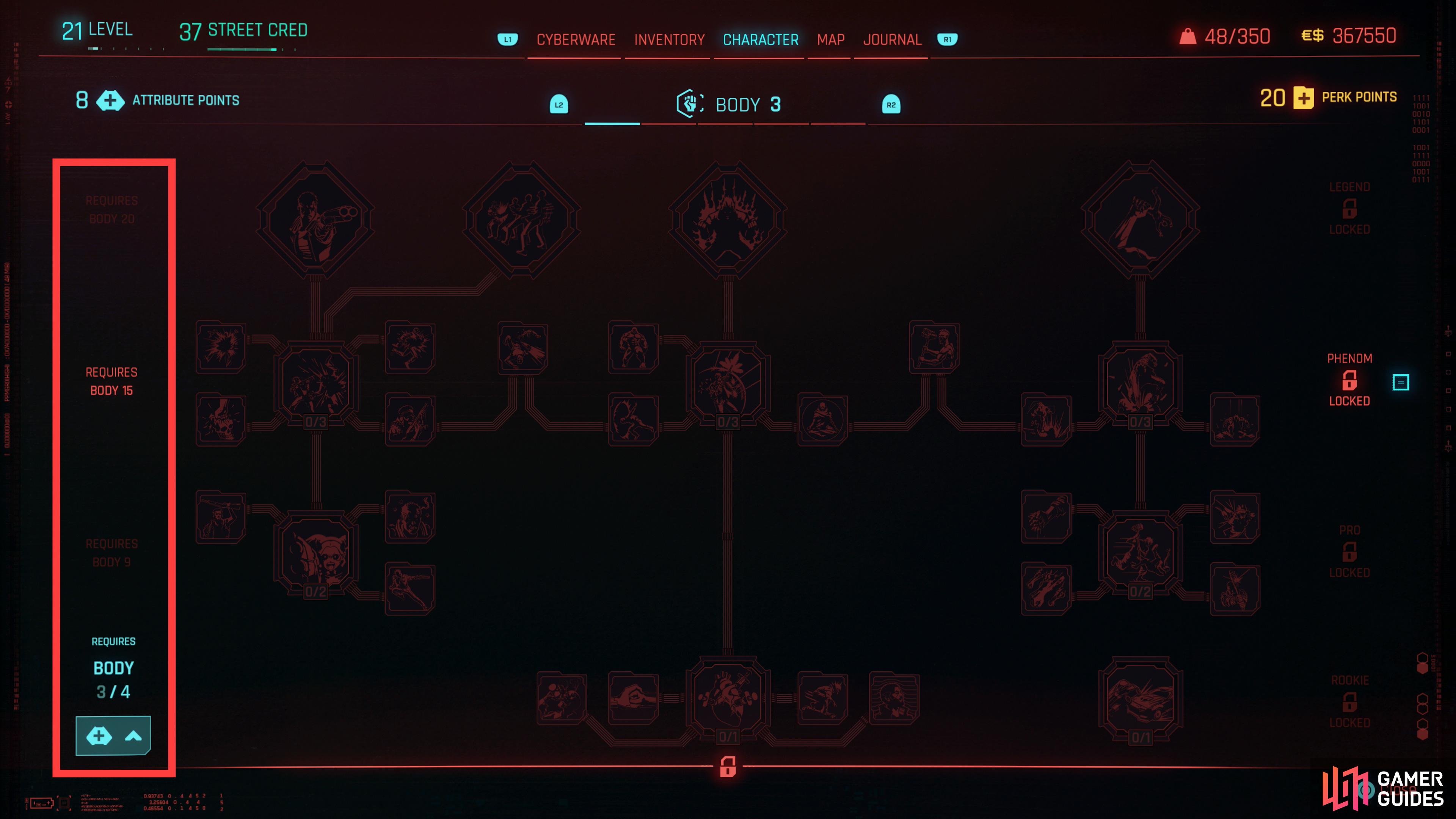

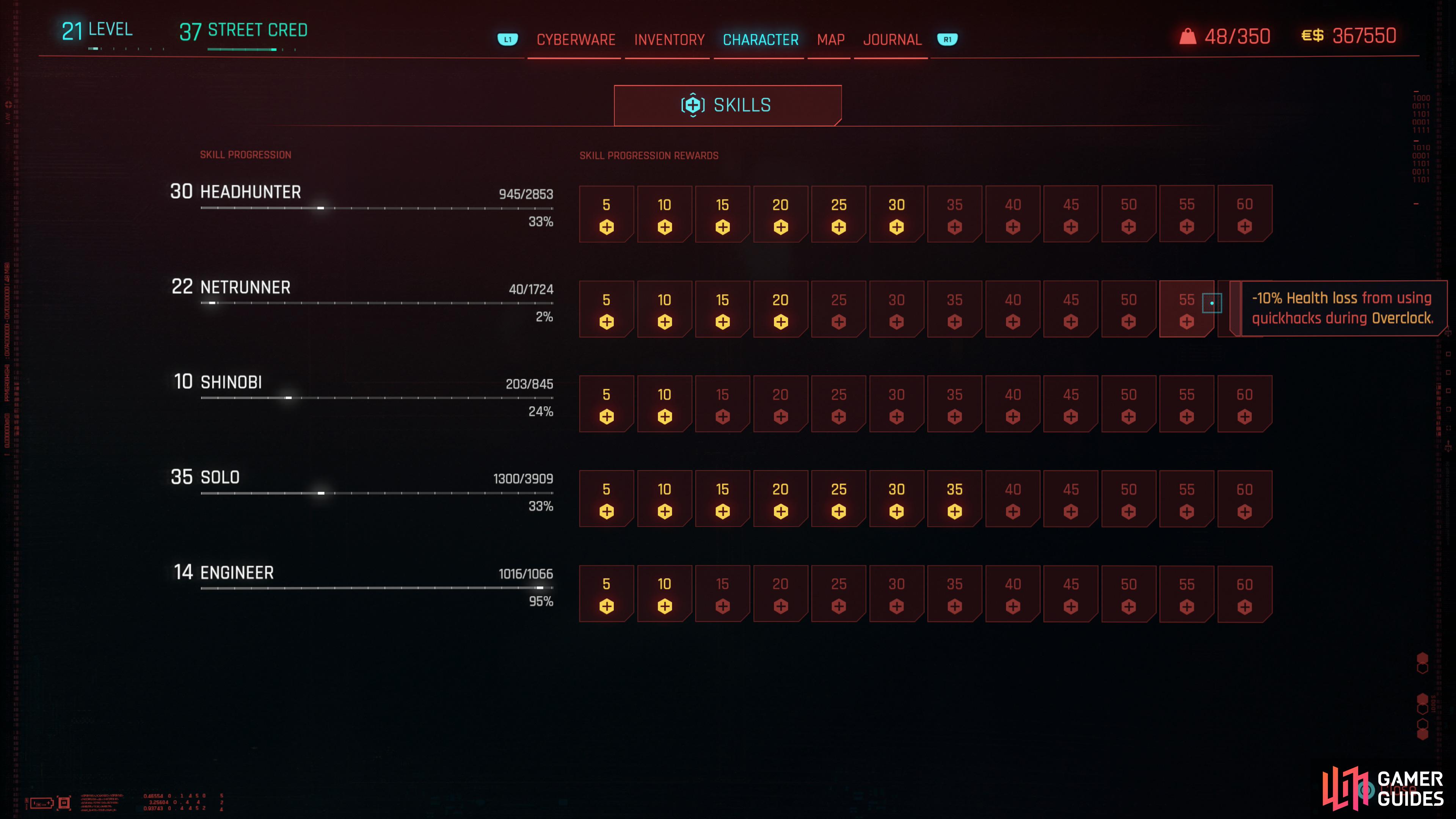




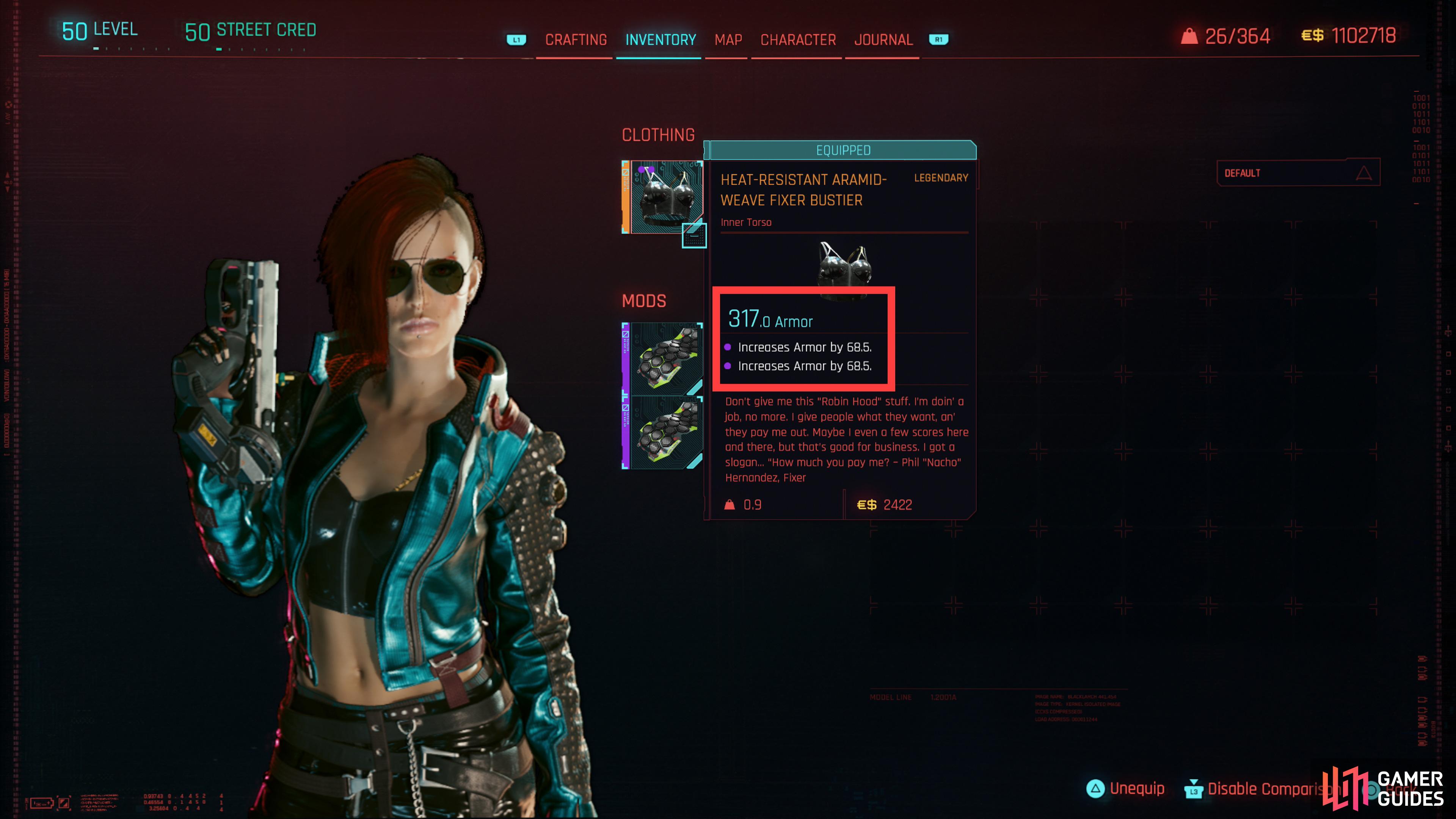
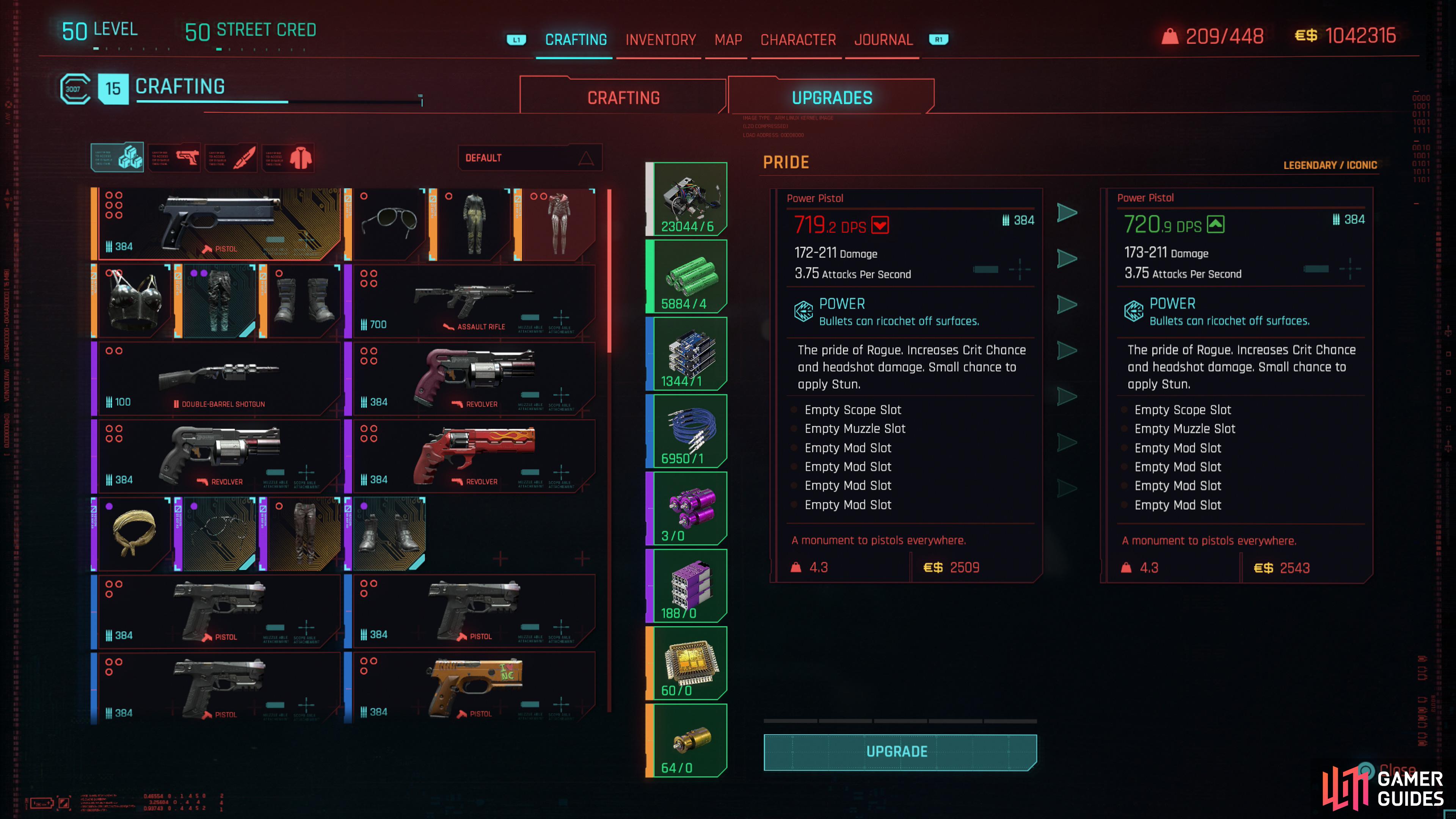


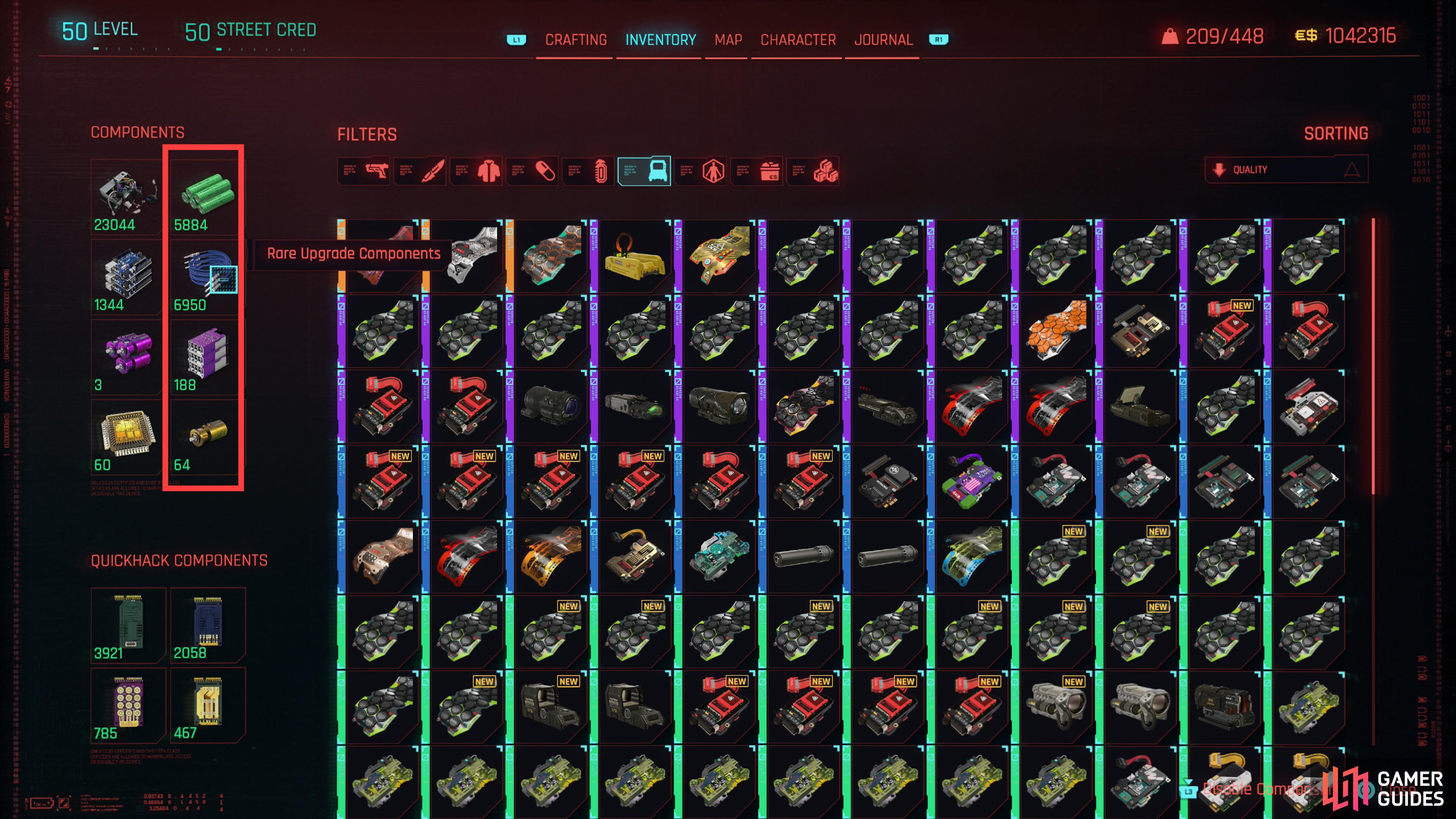

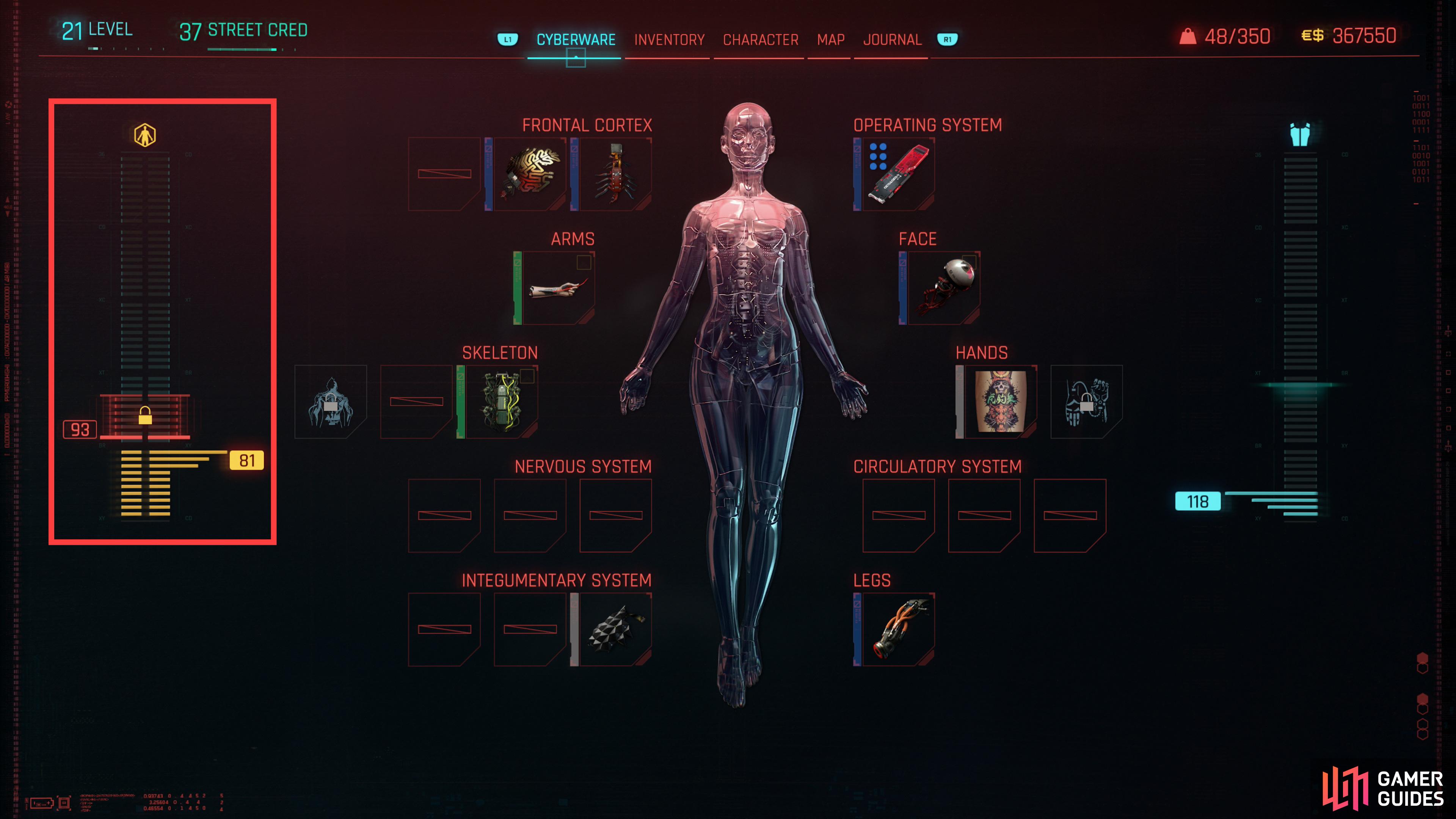
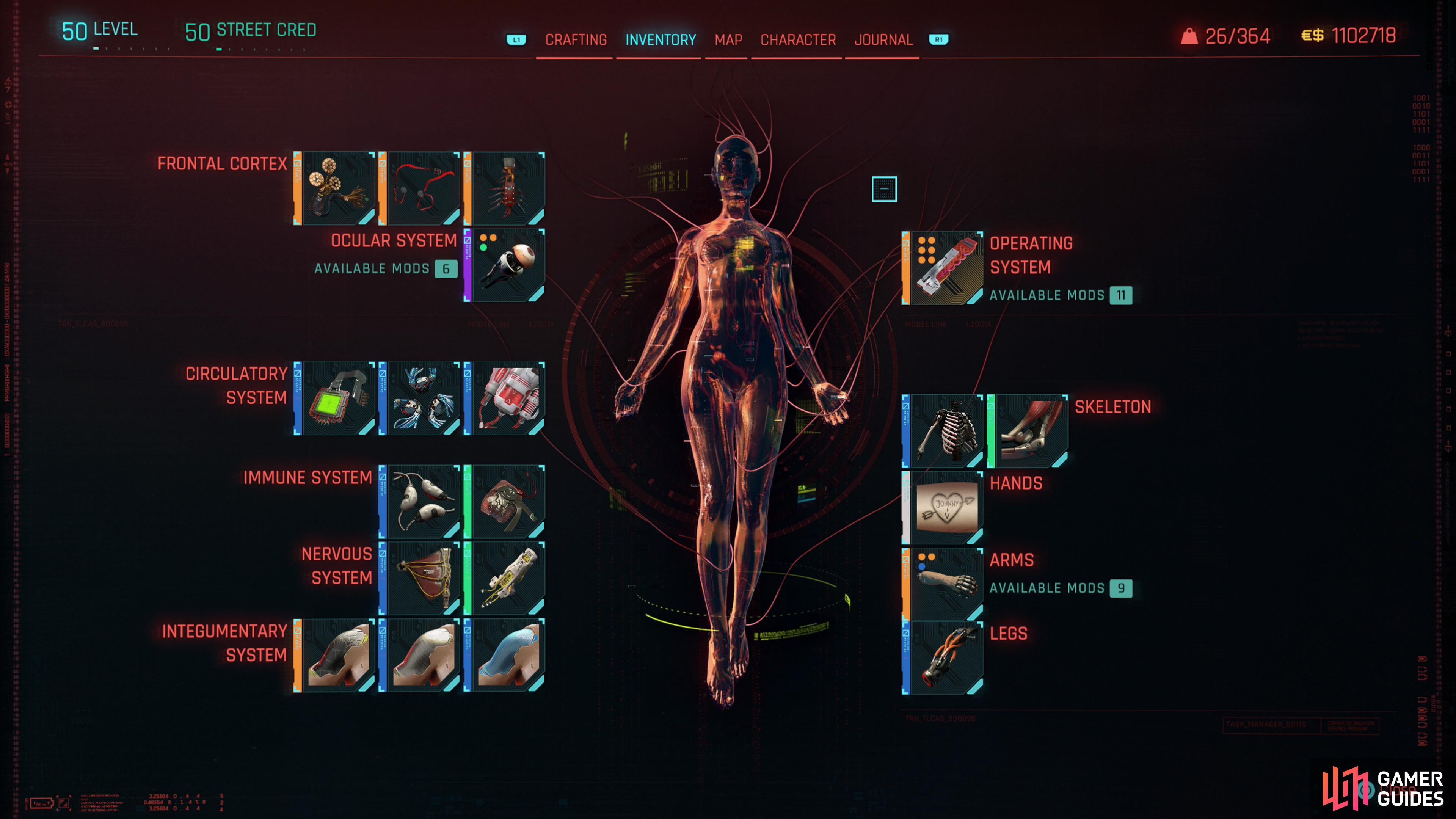

 Sign up
Sign up
No Comments